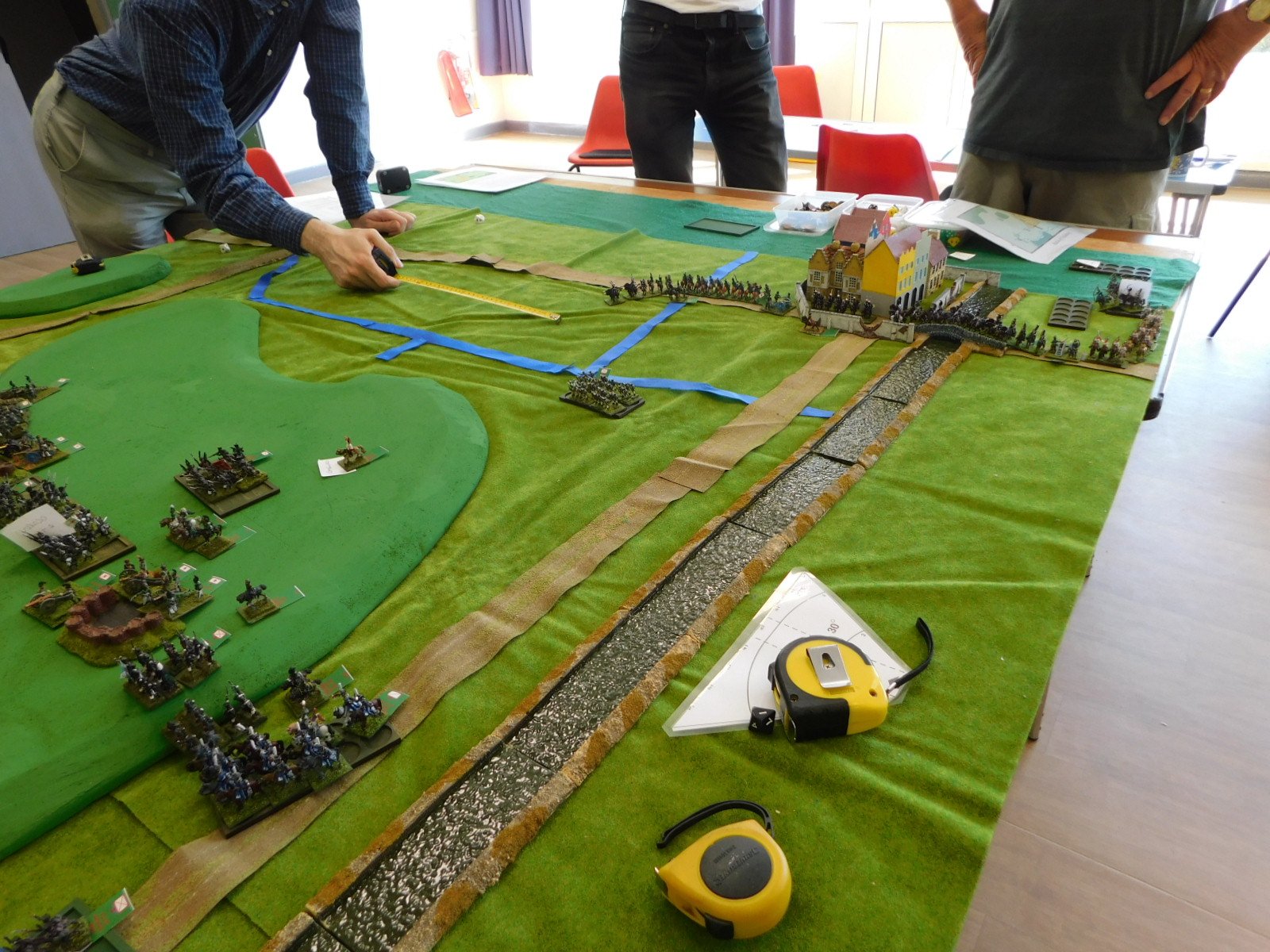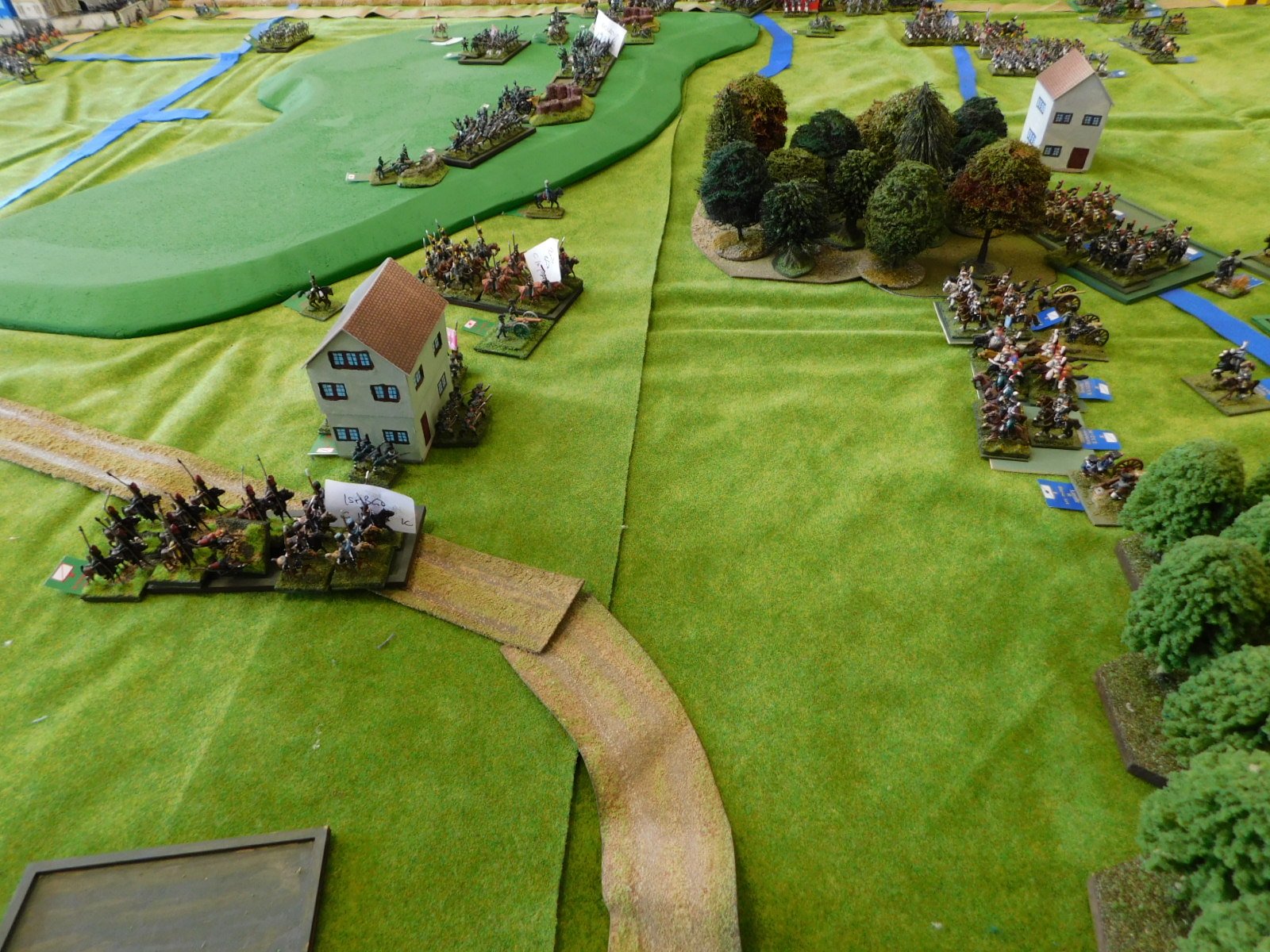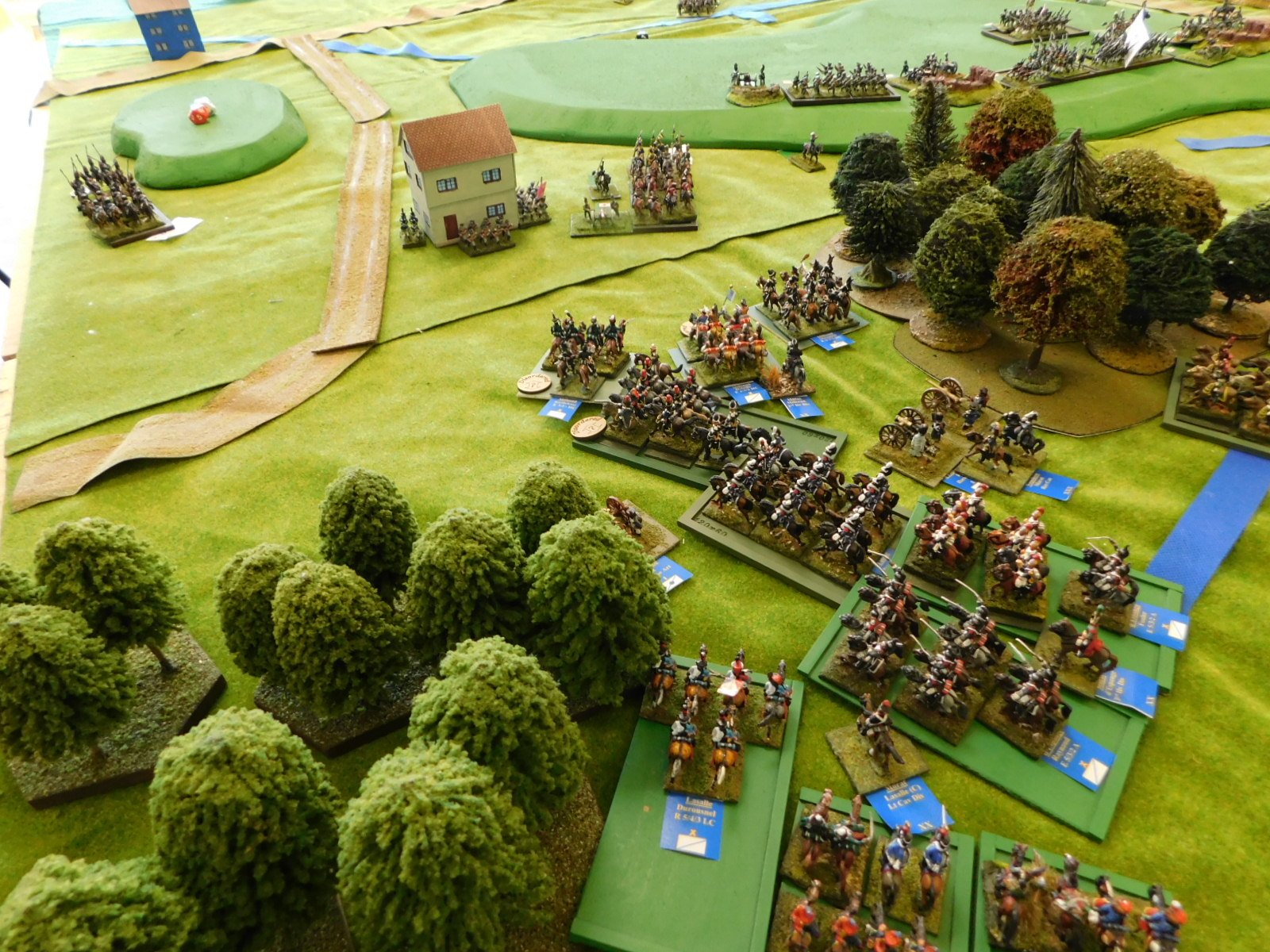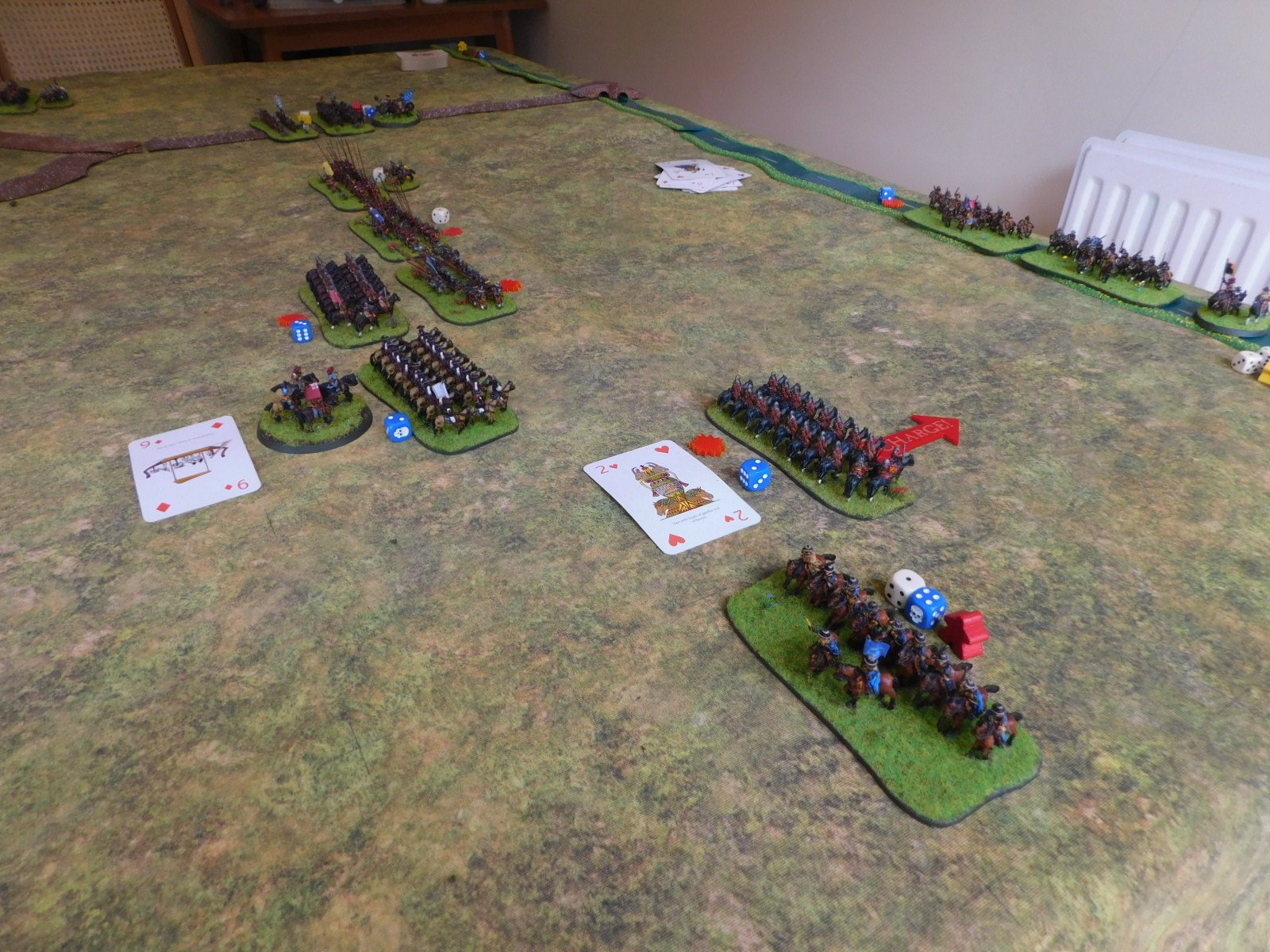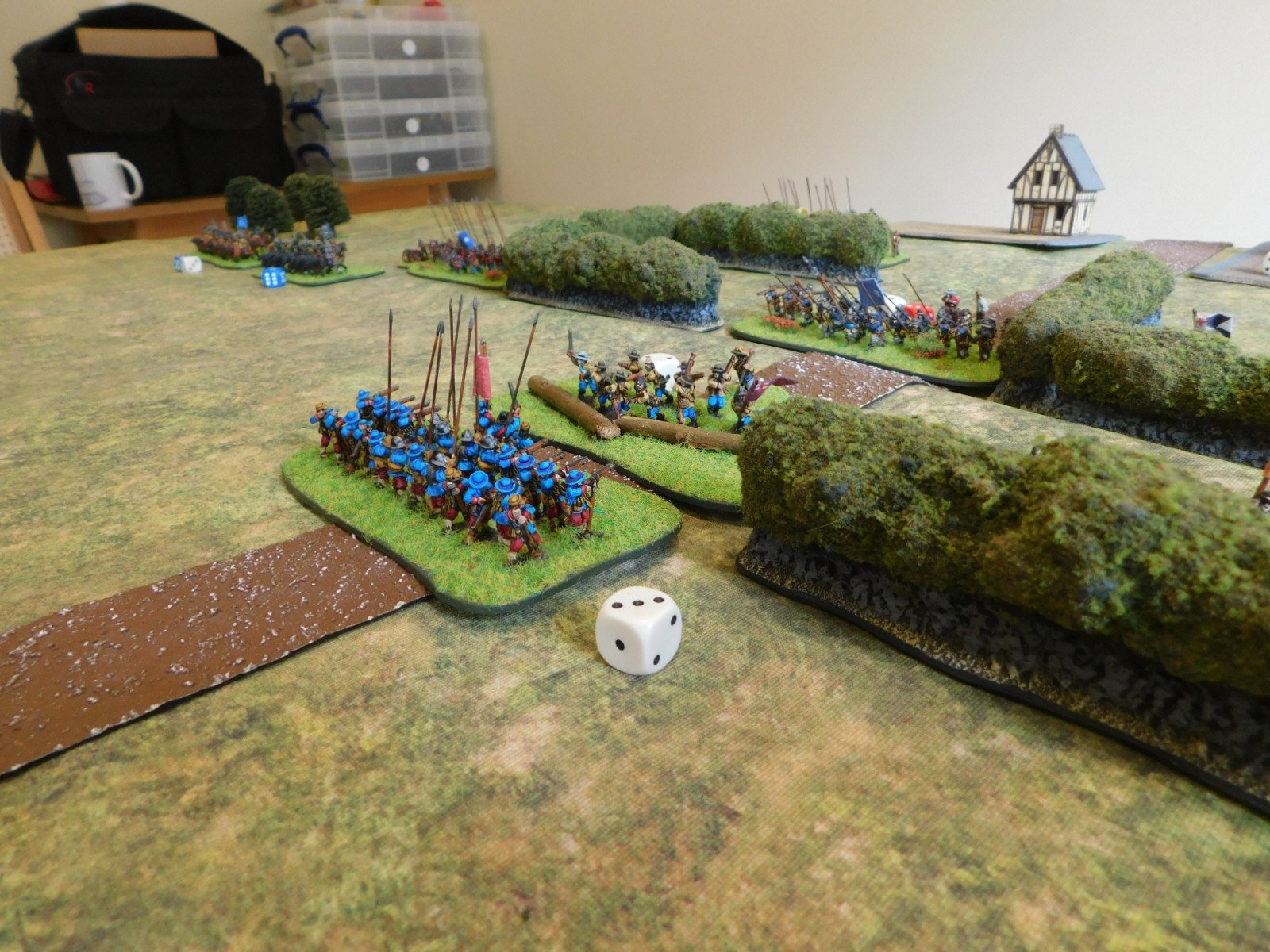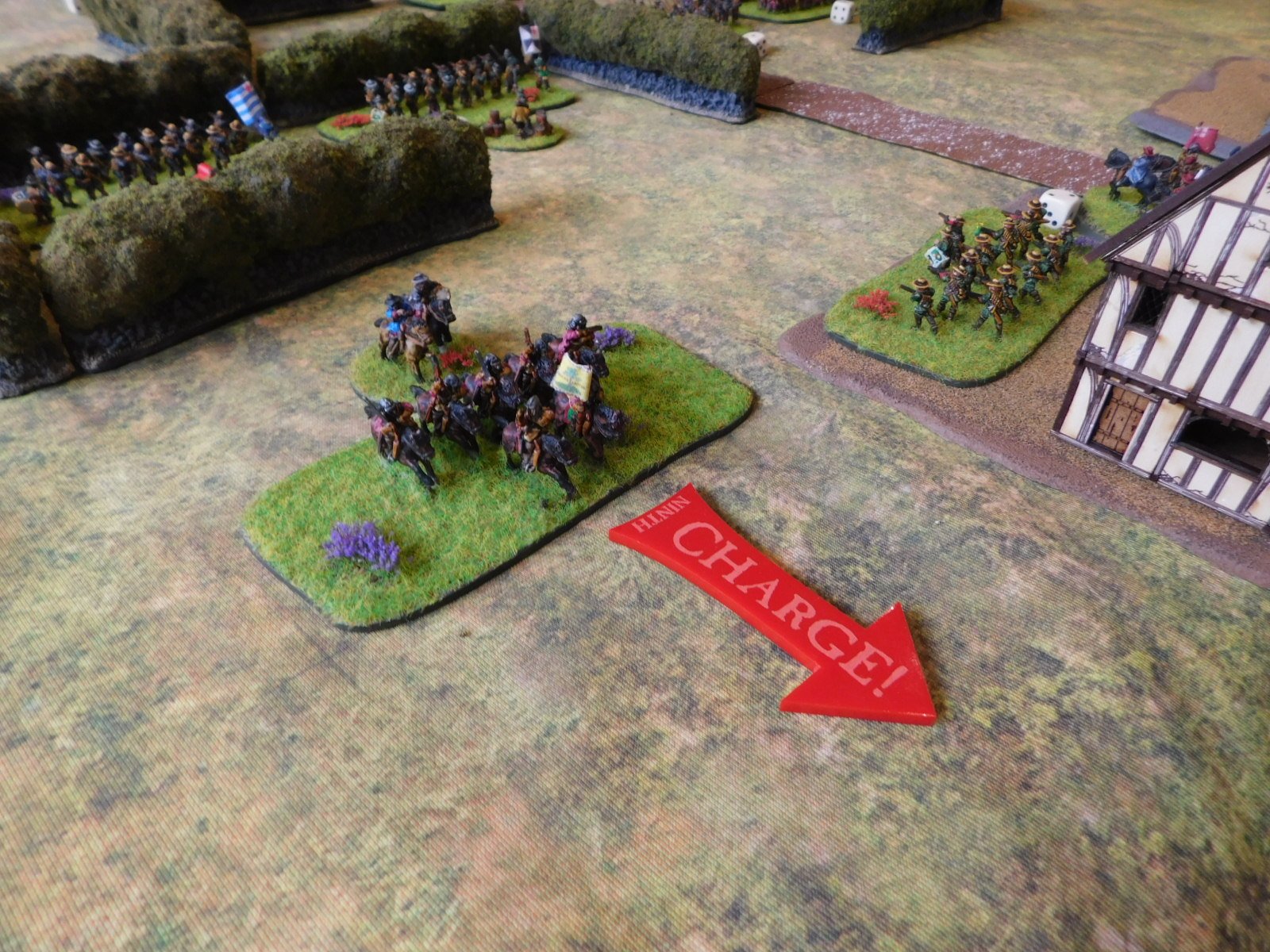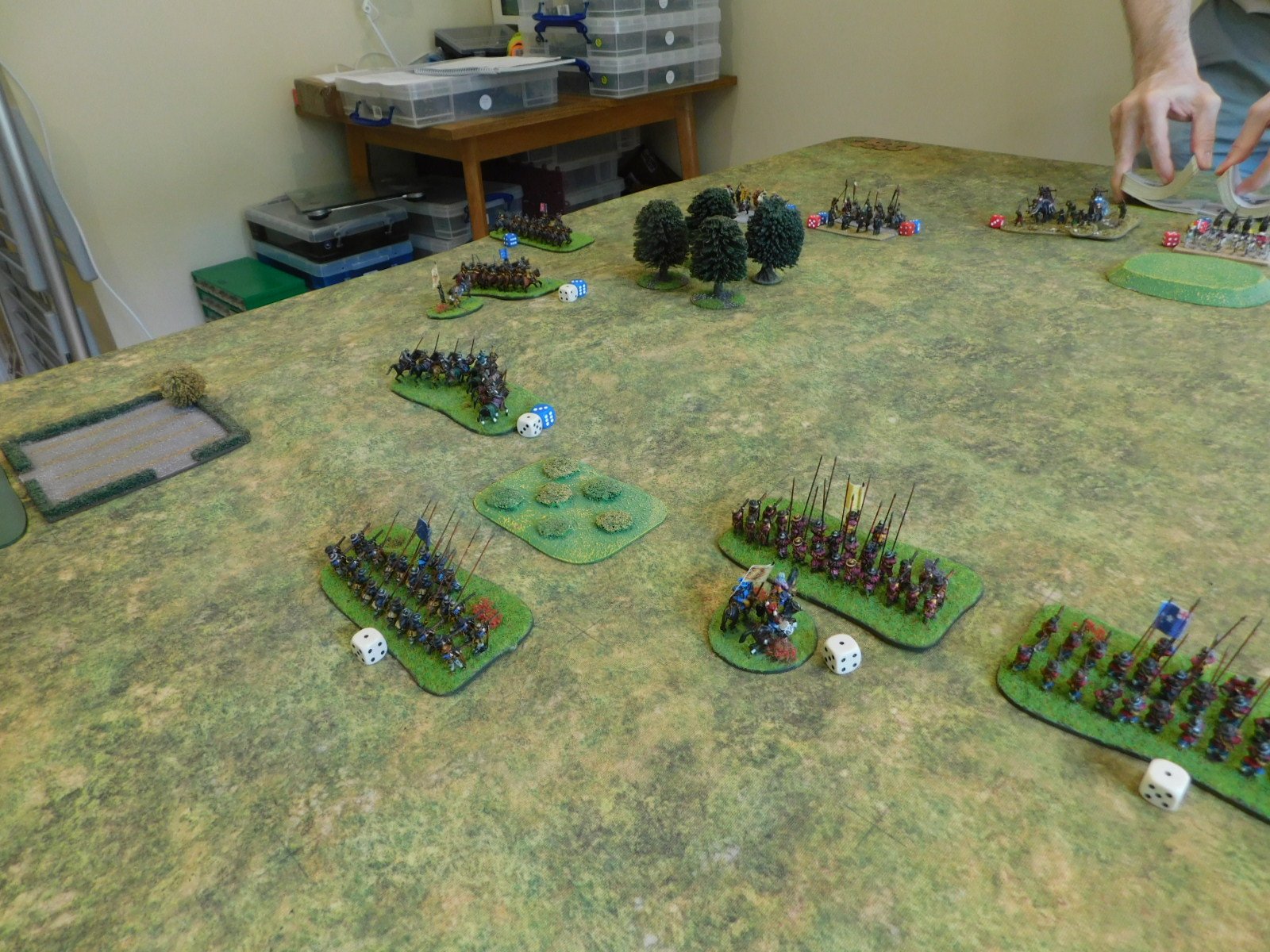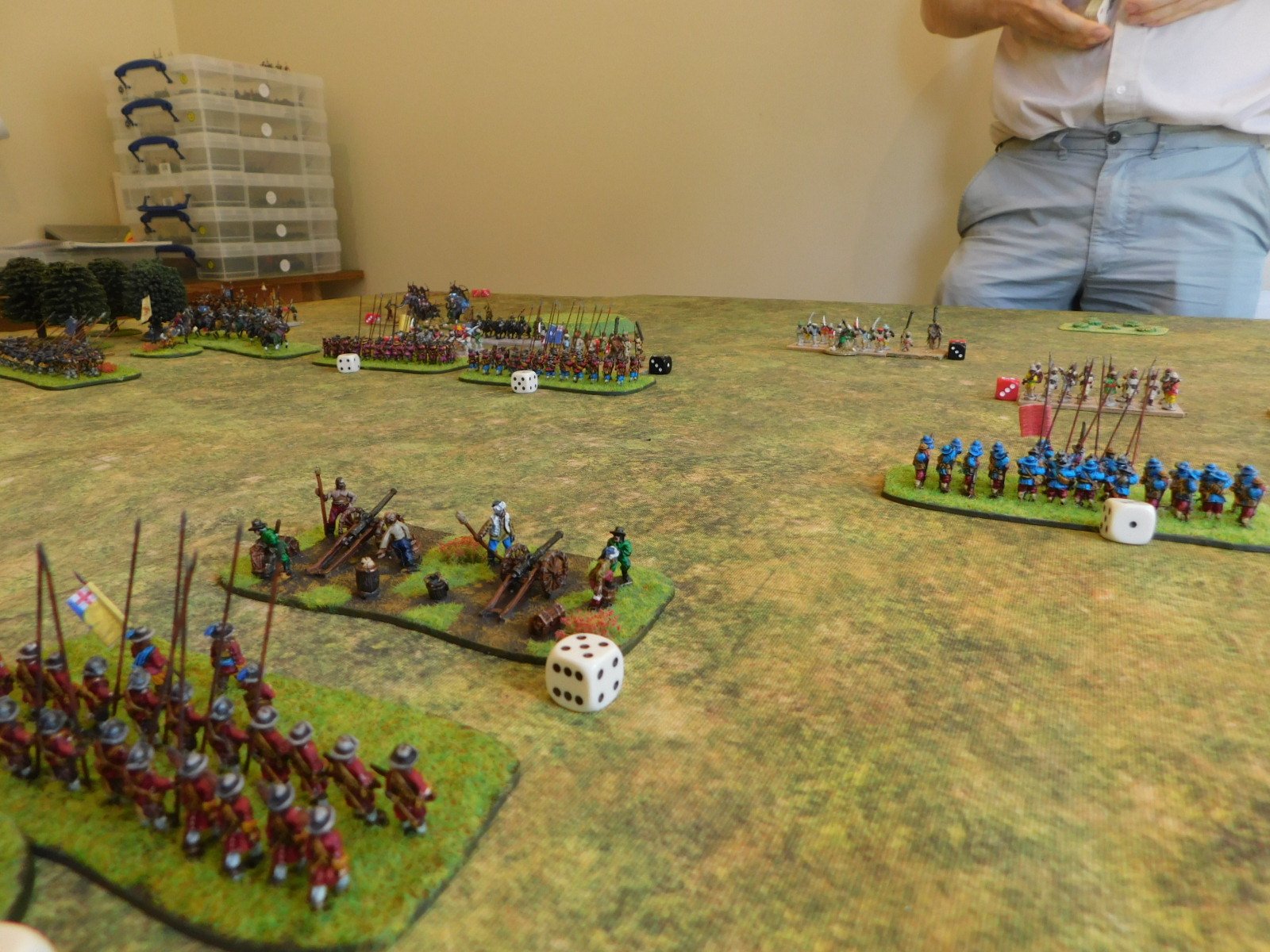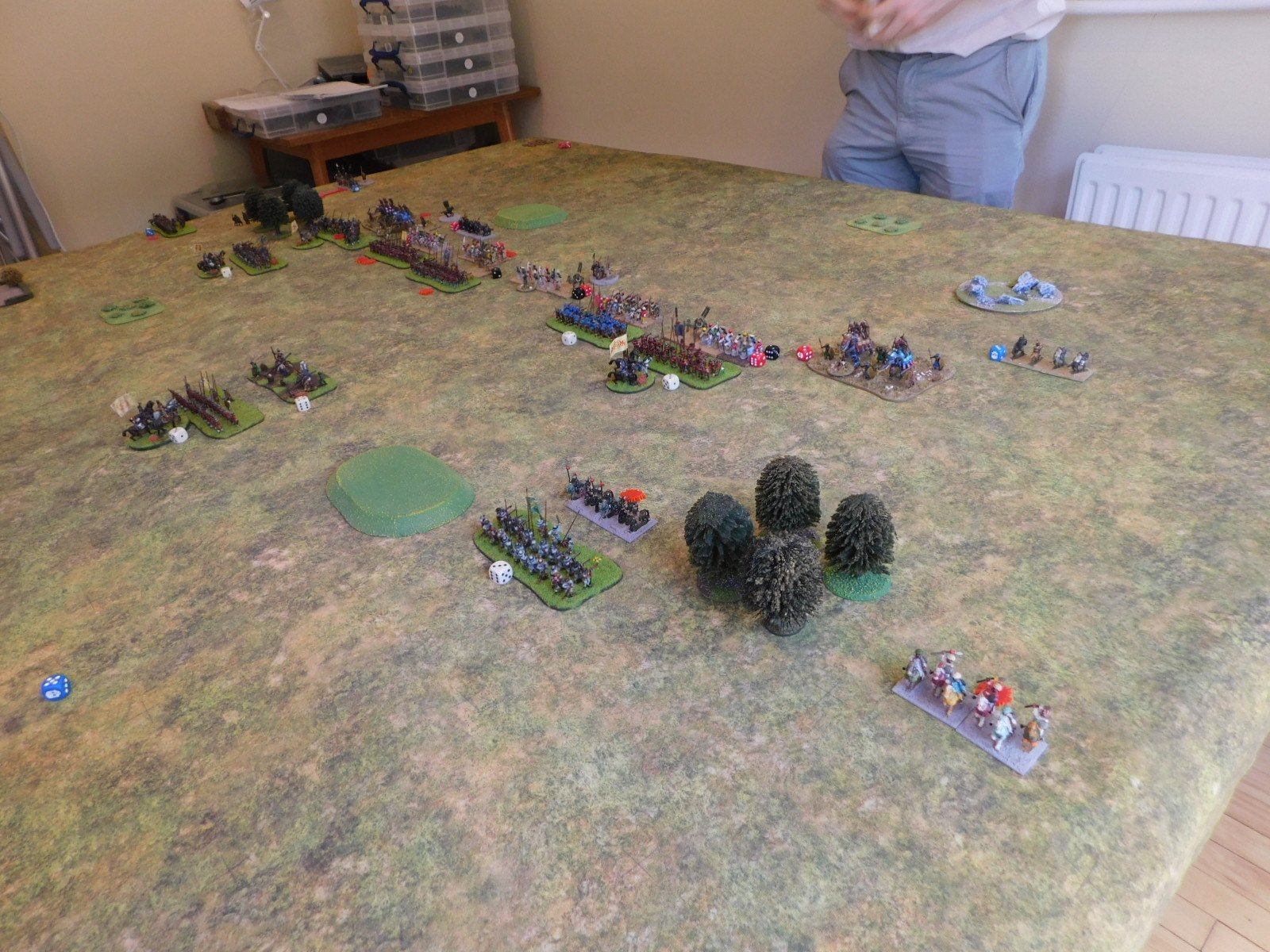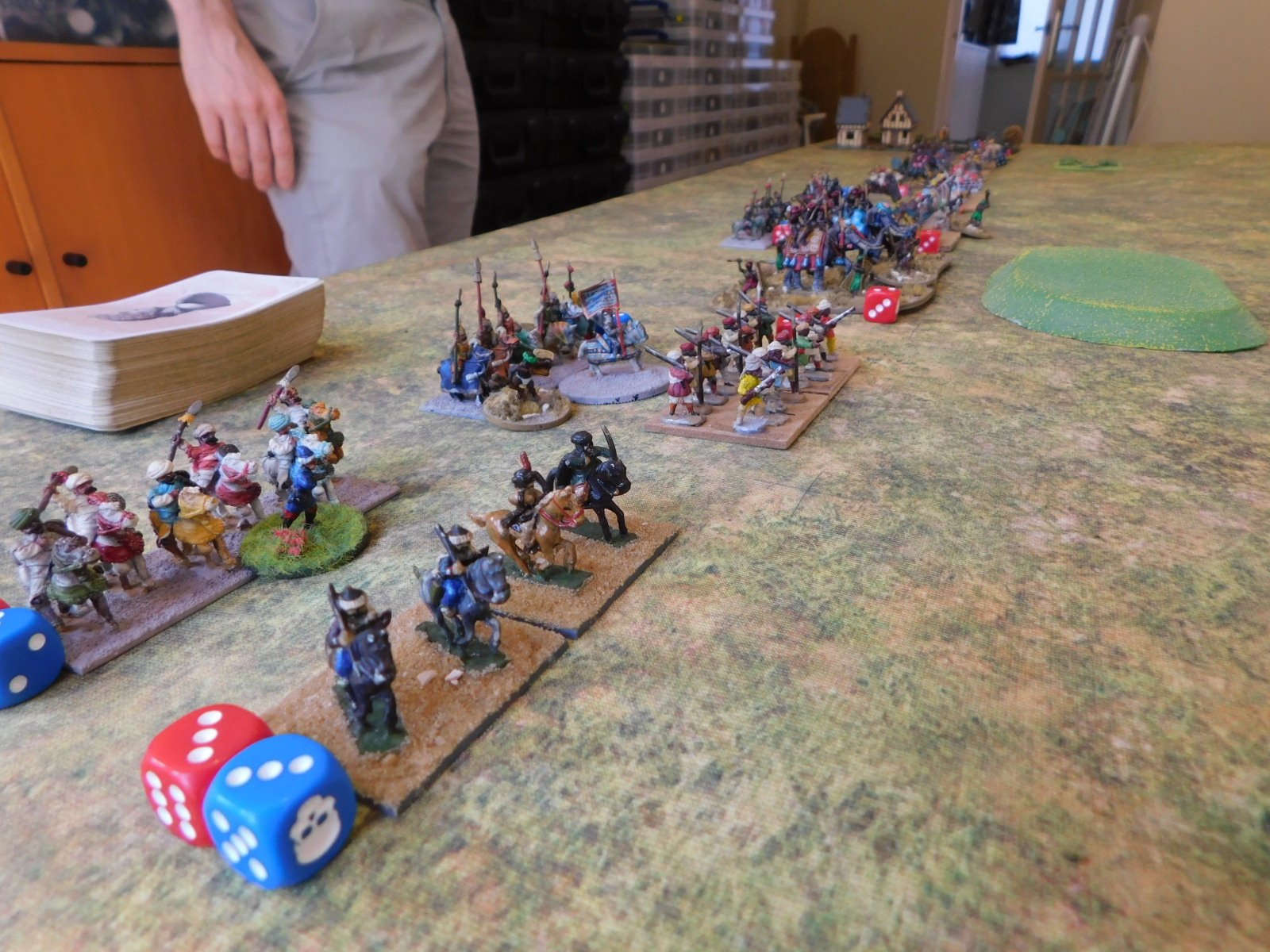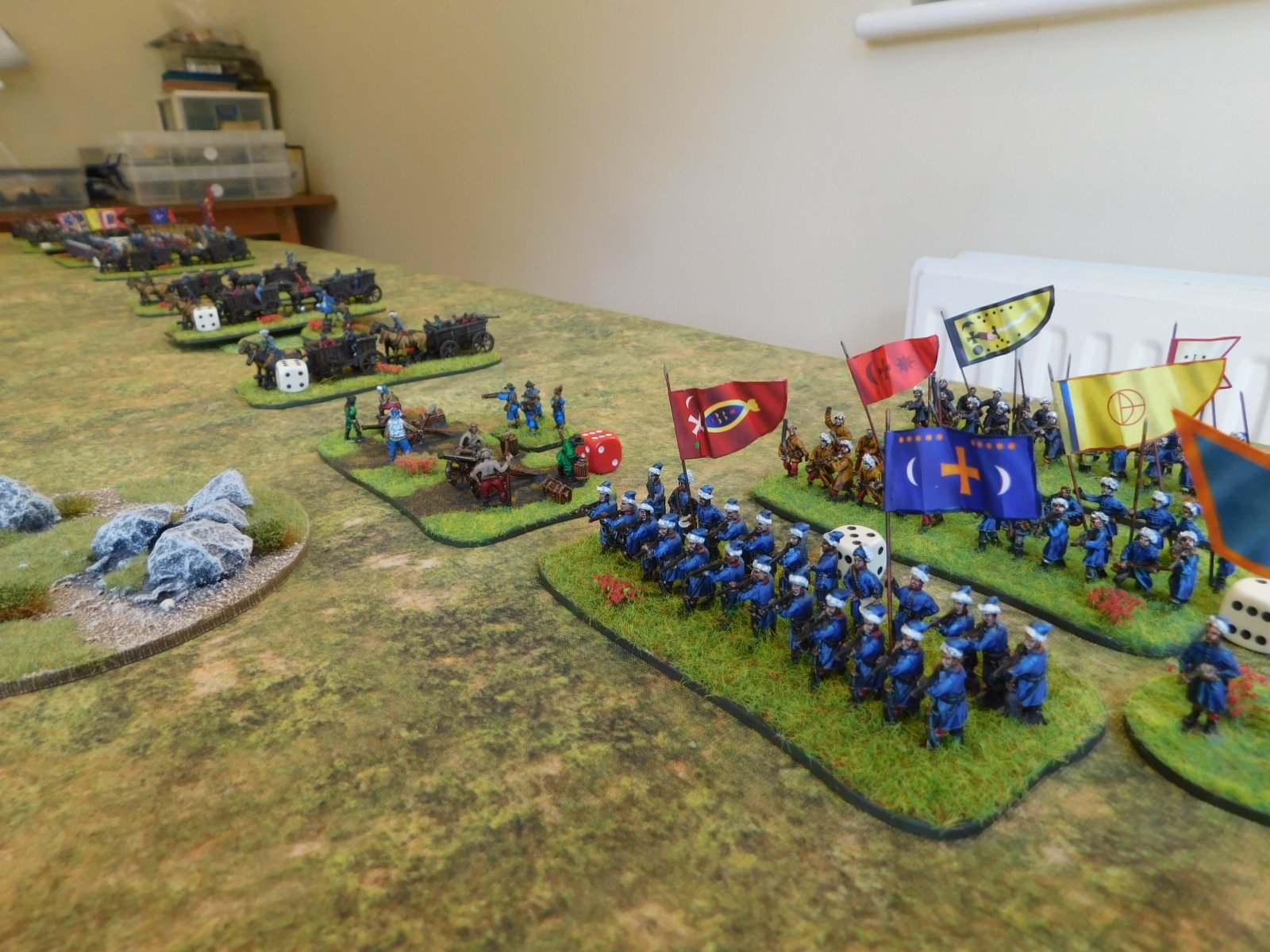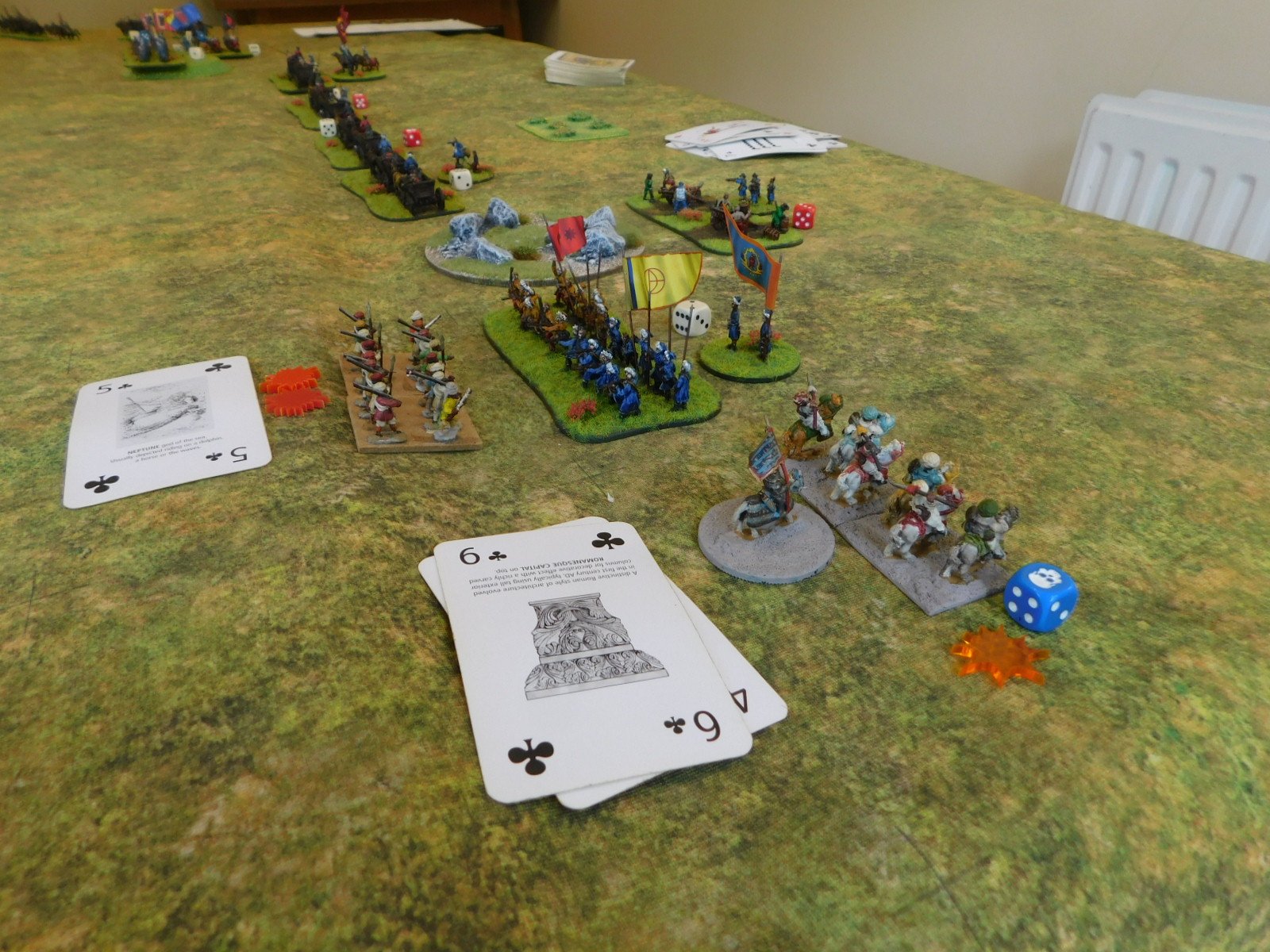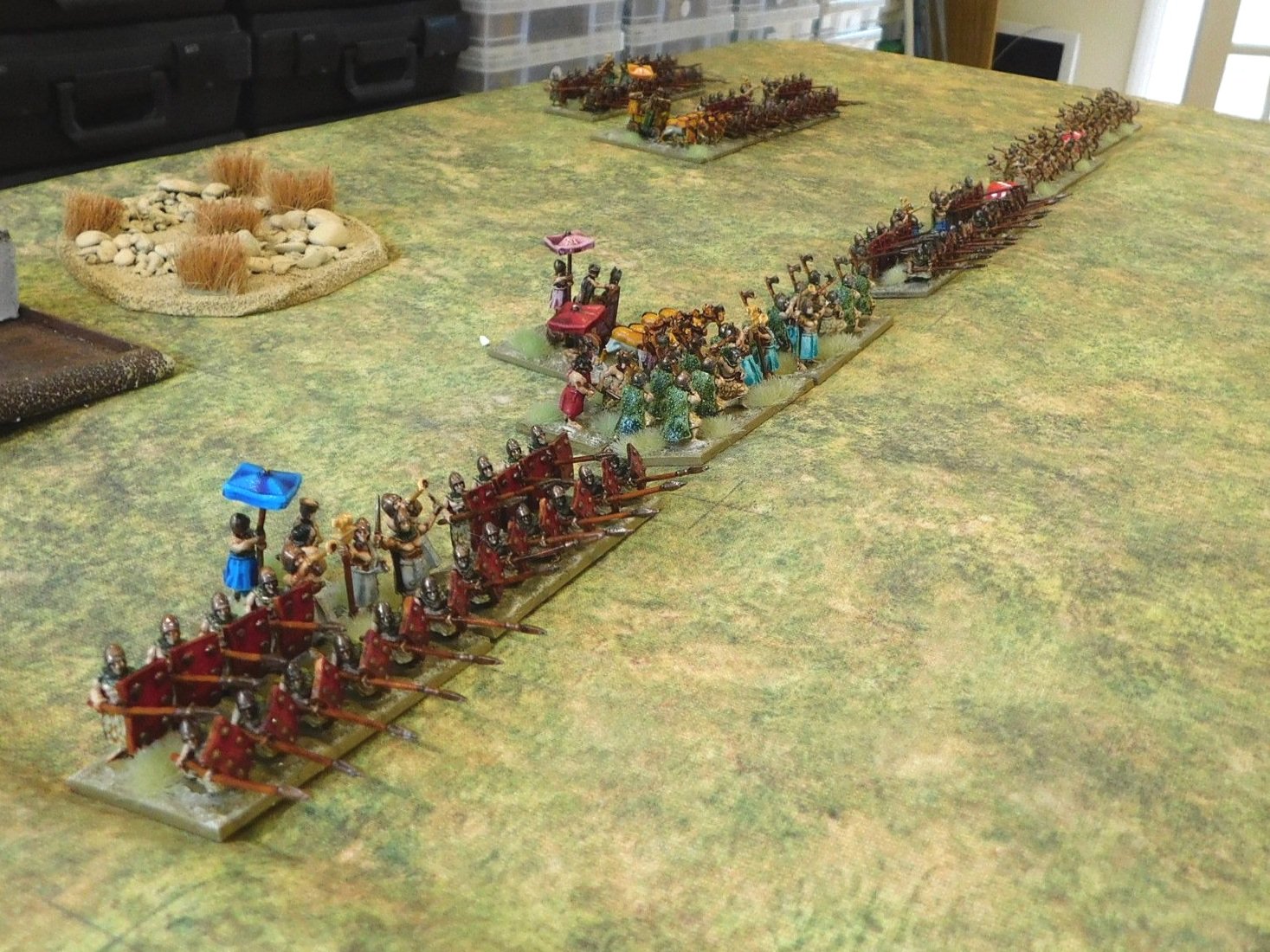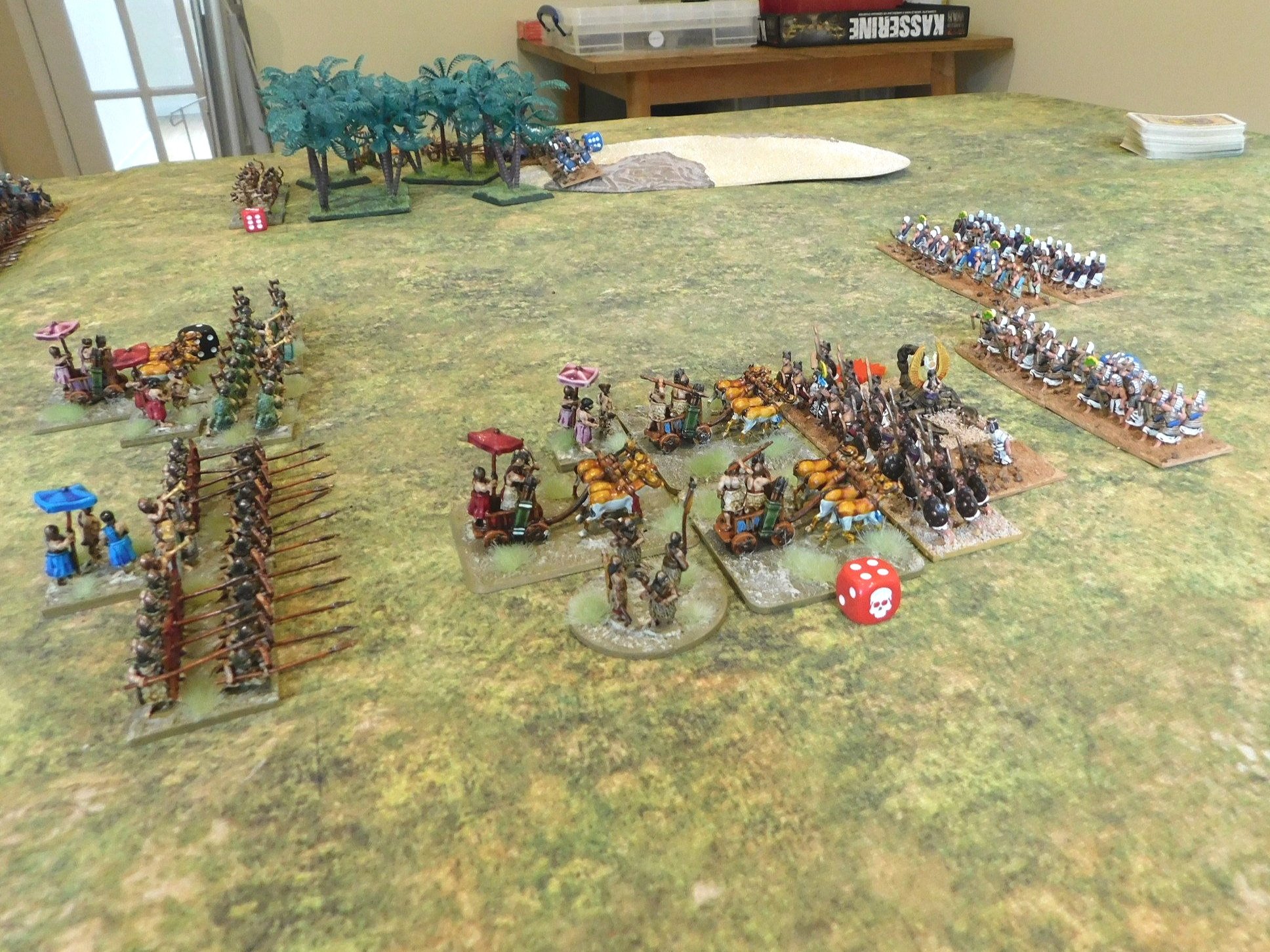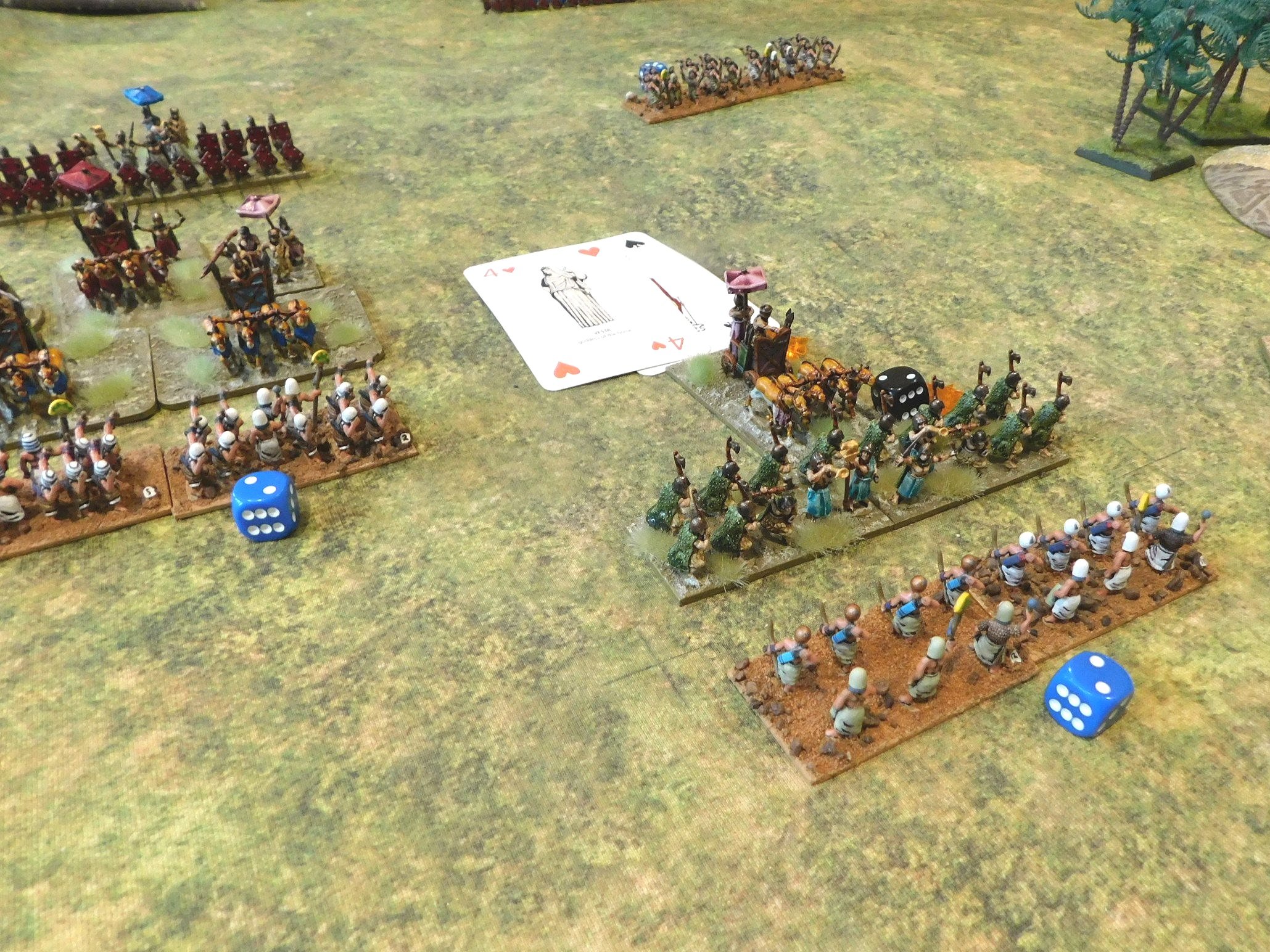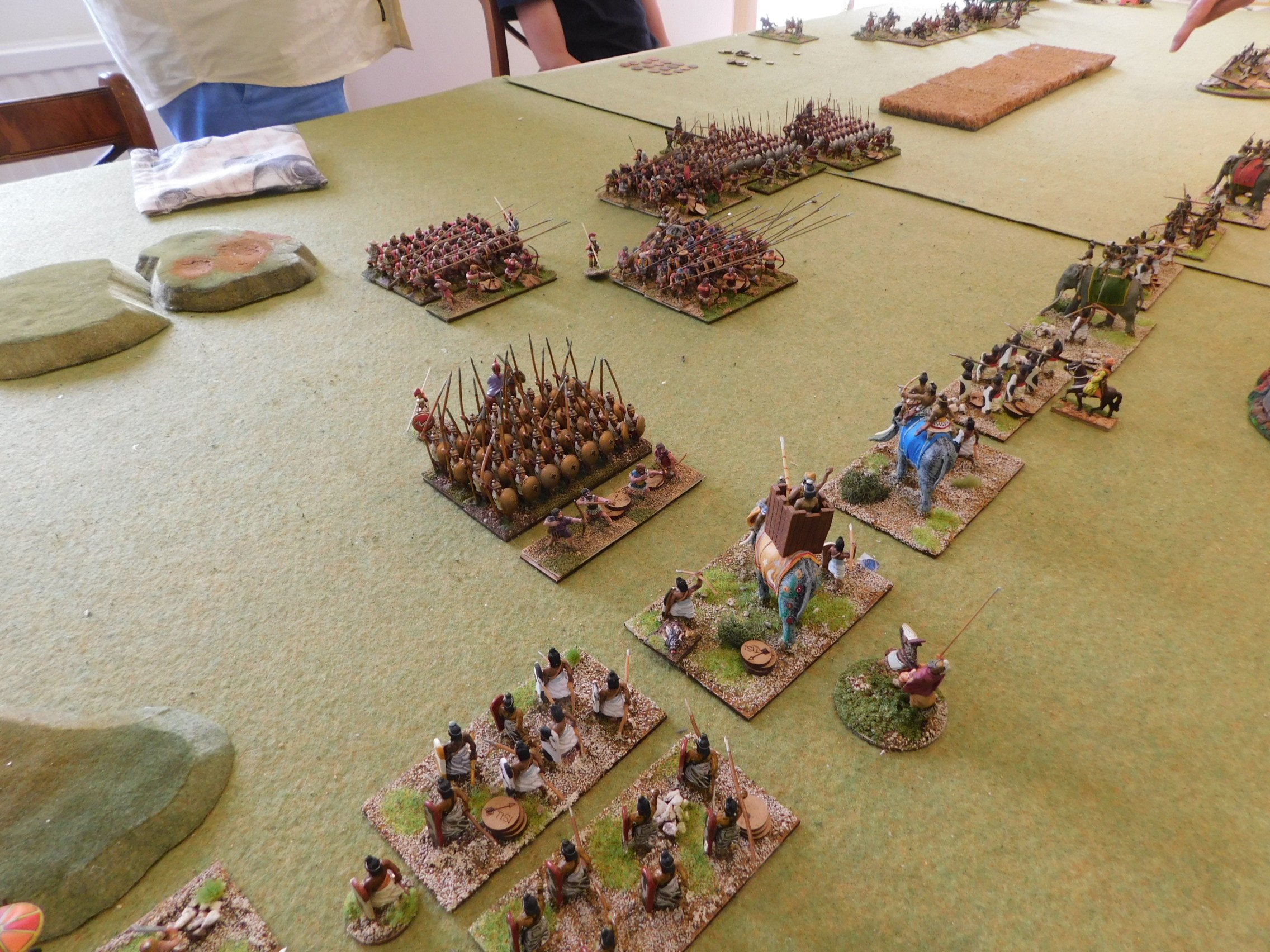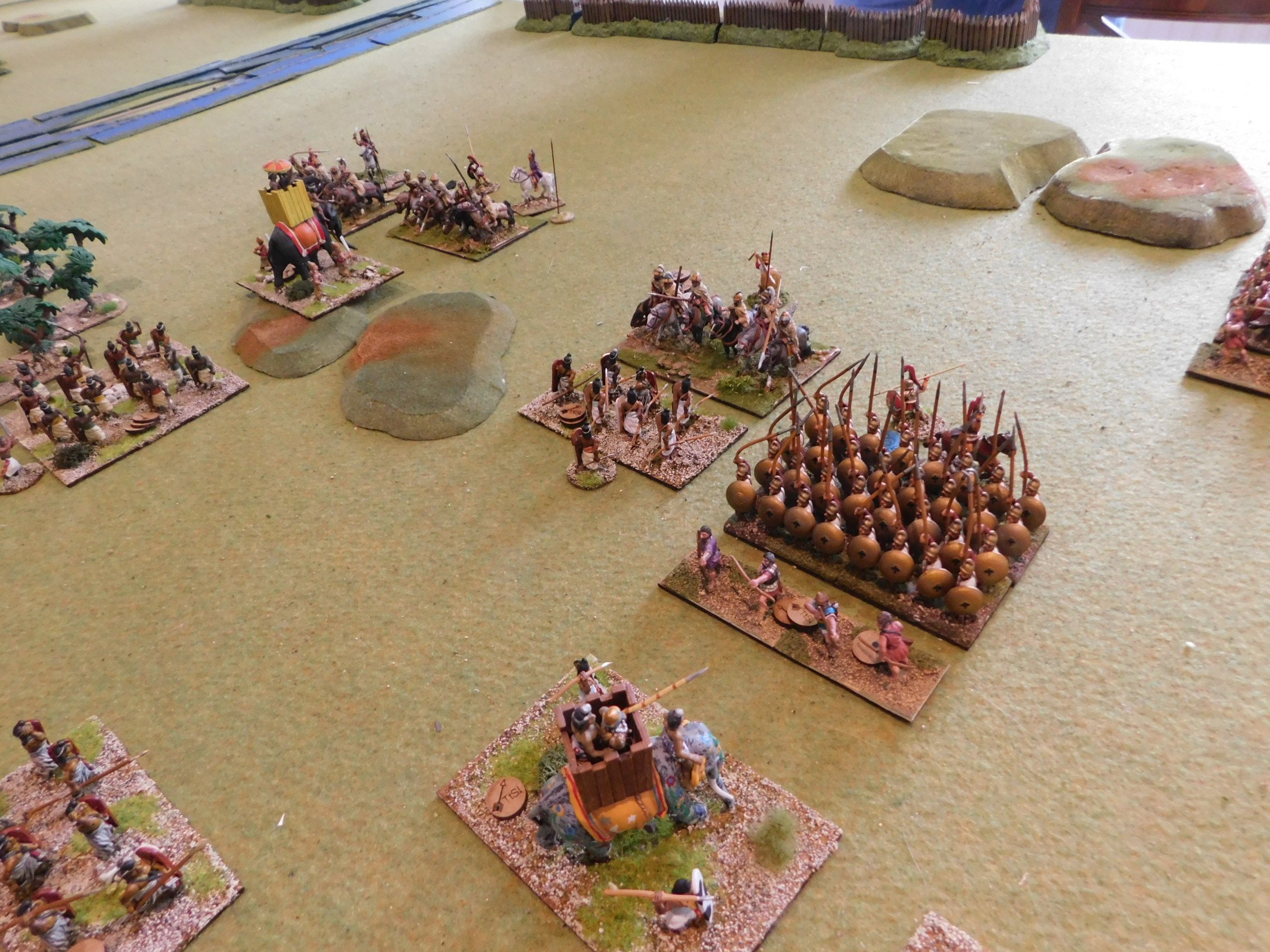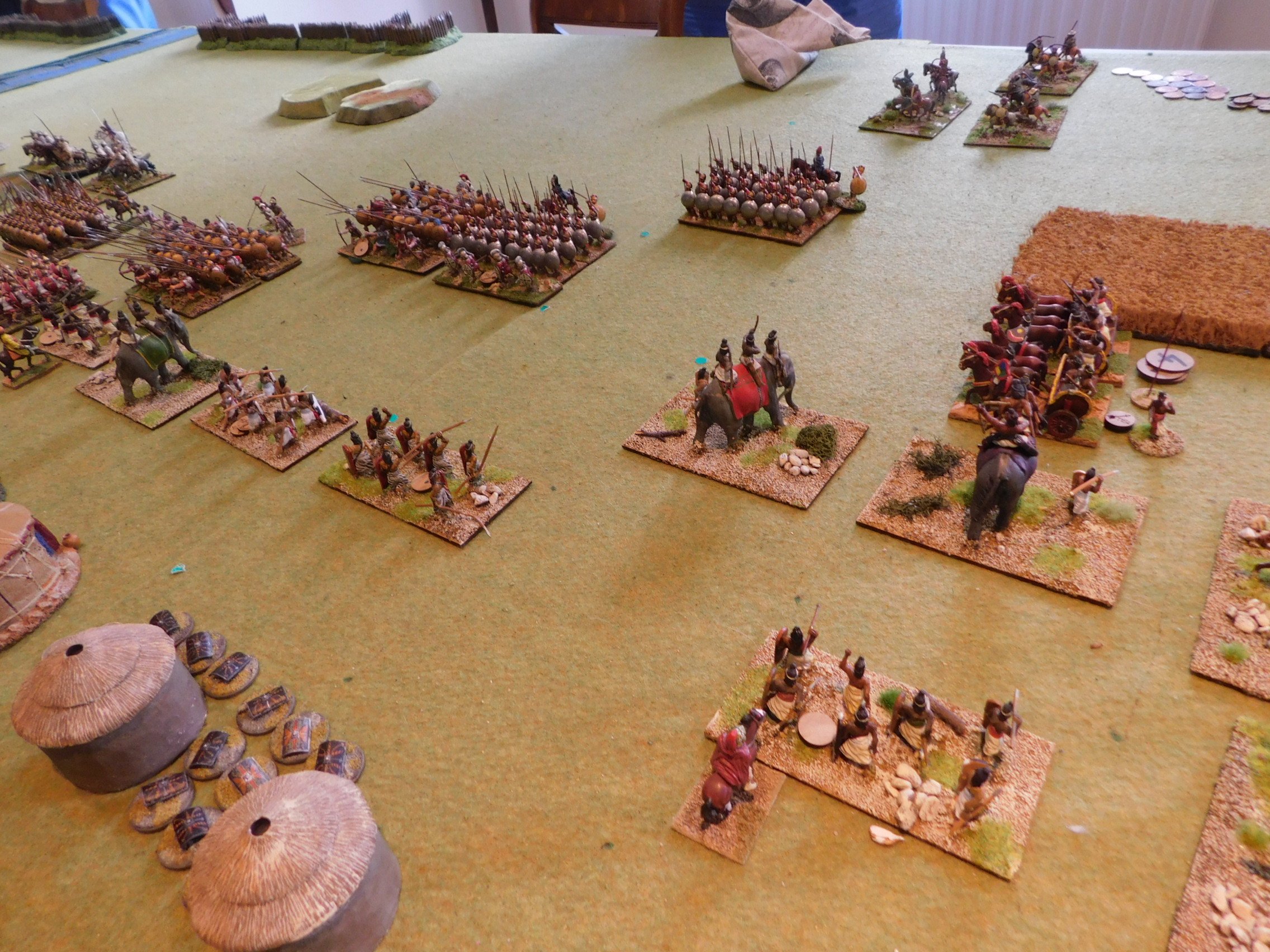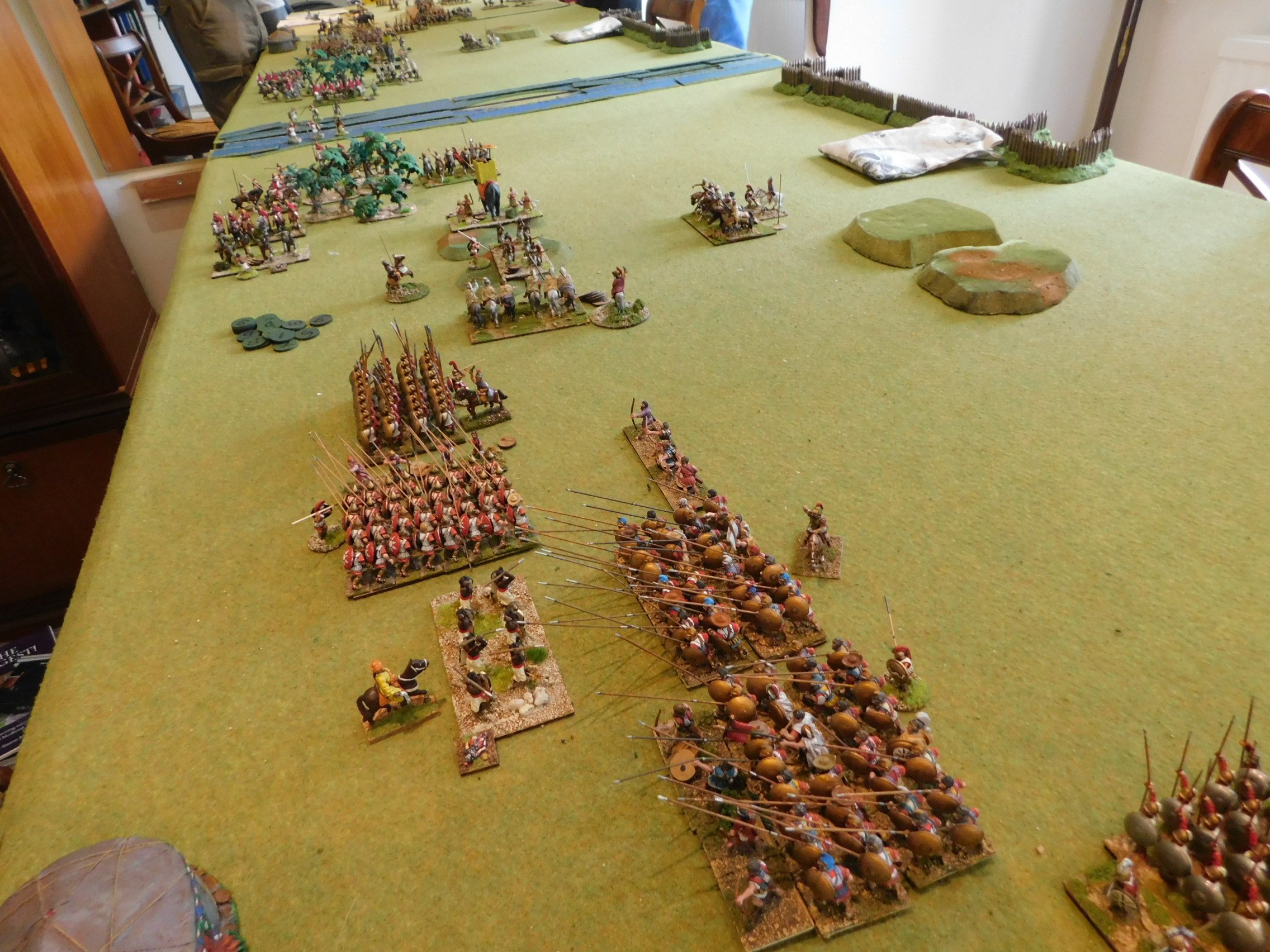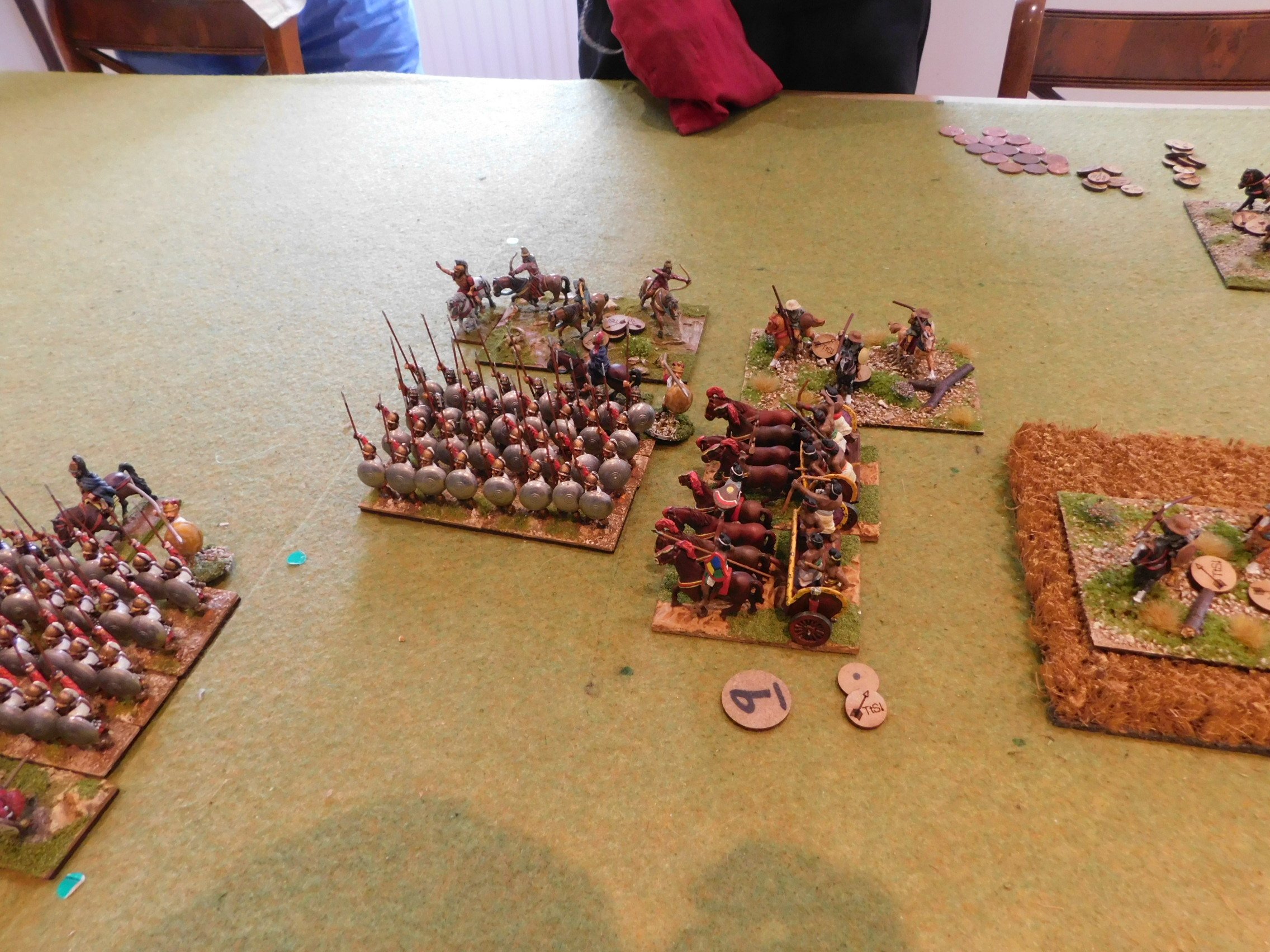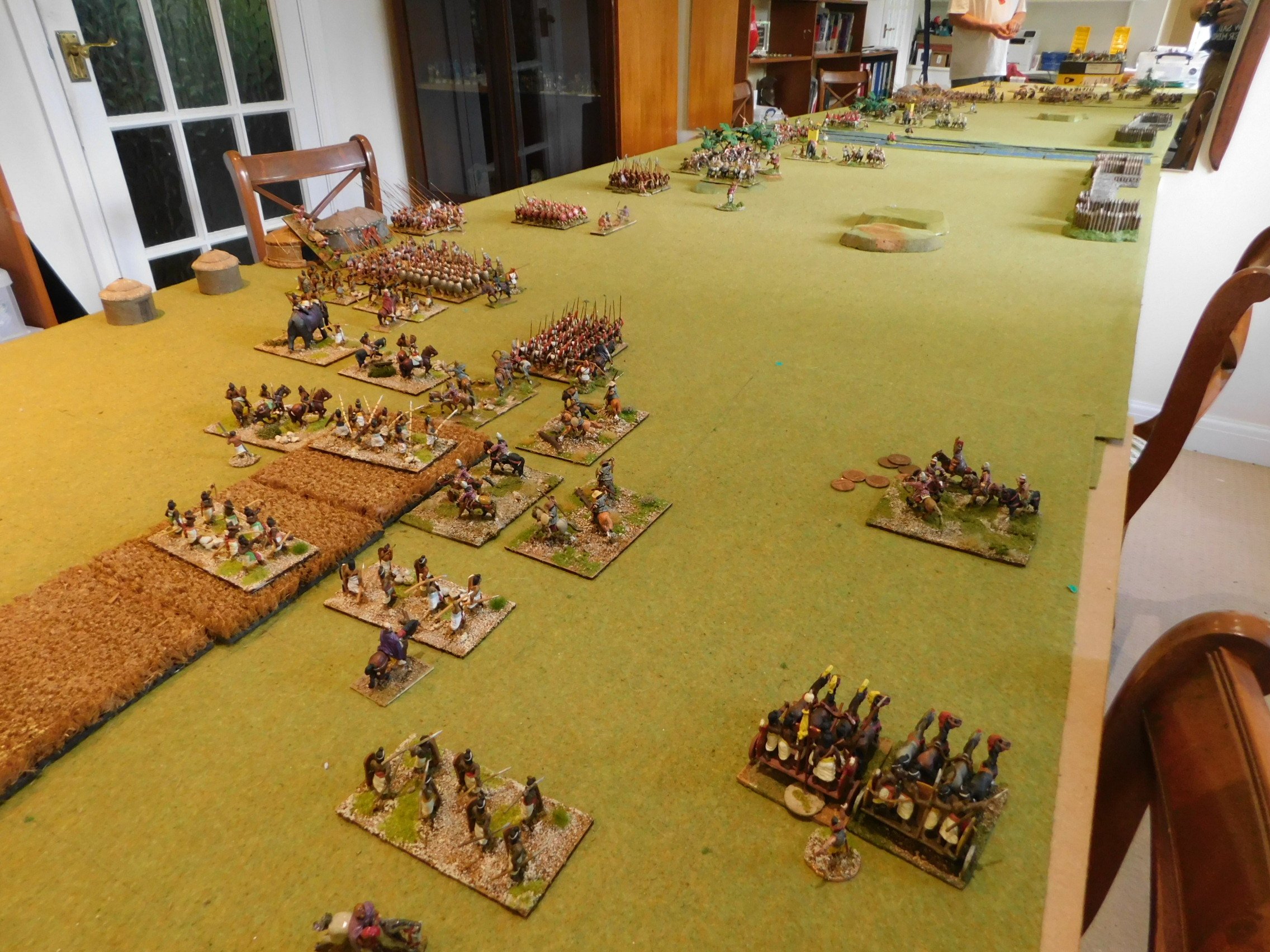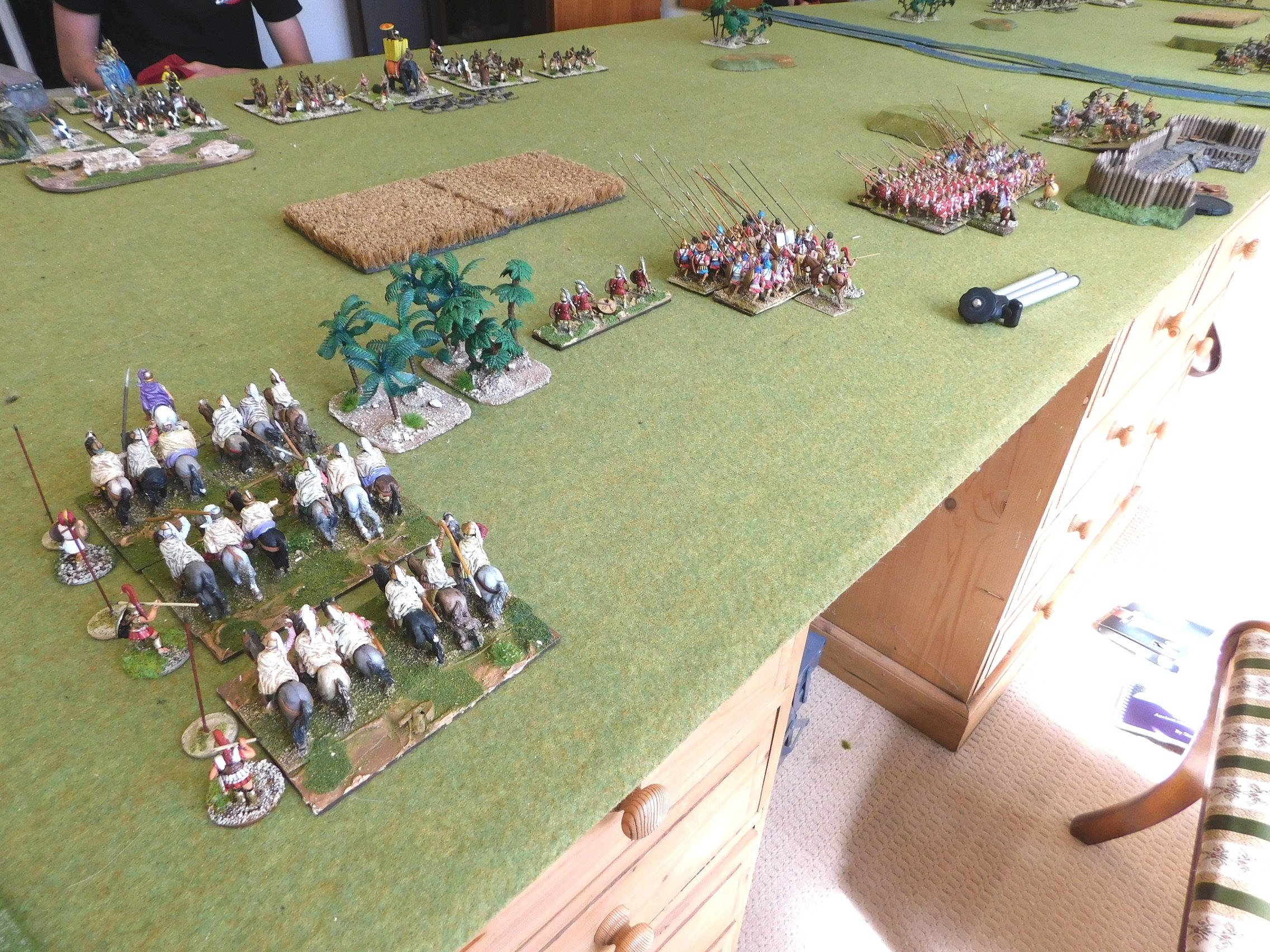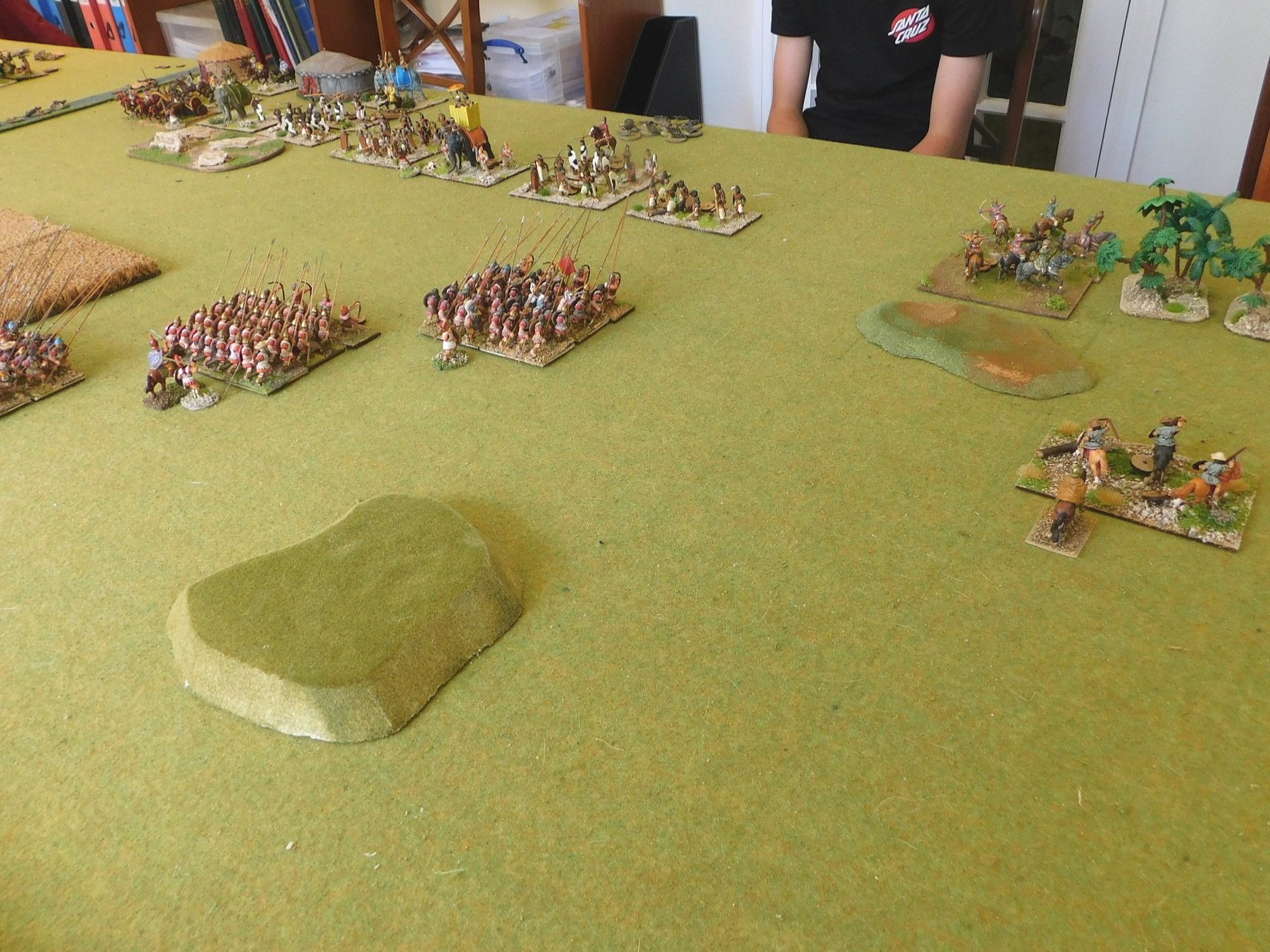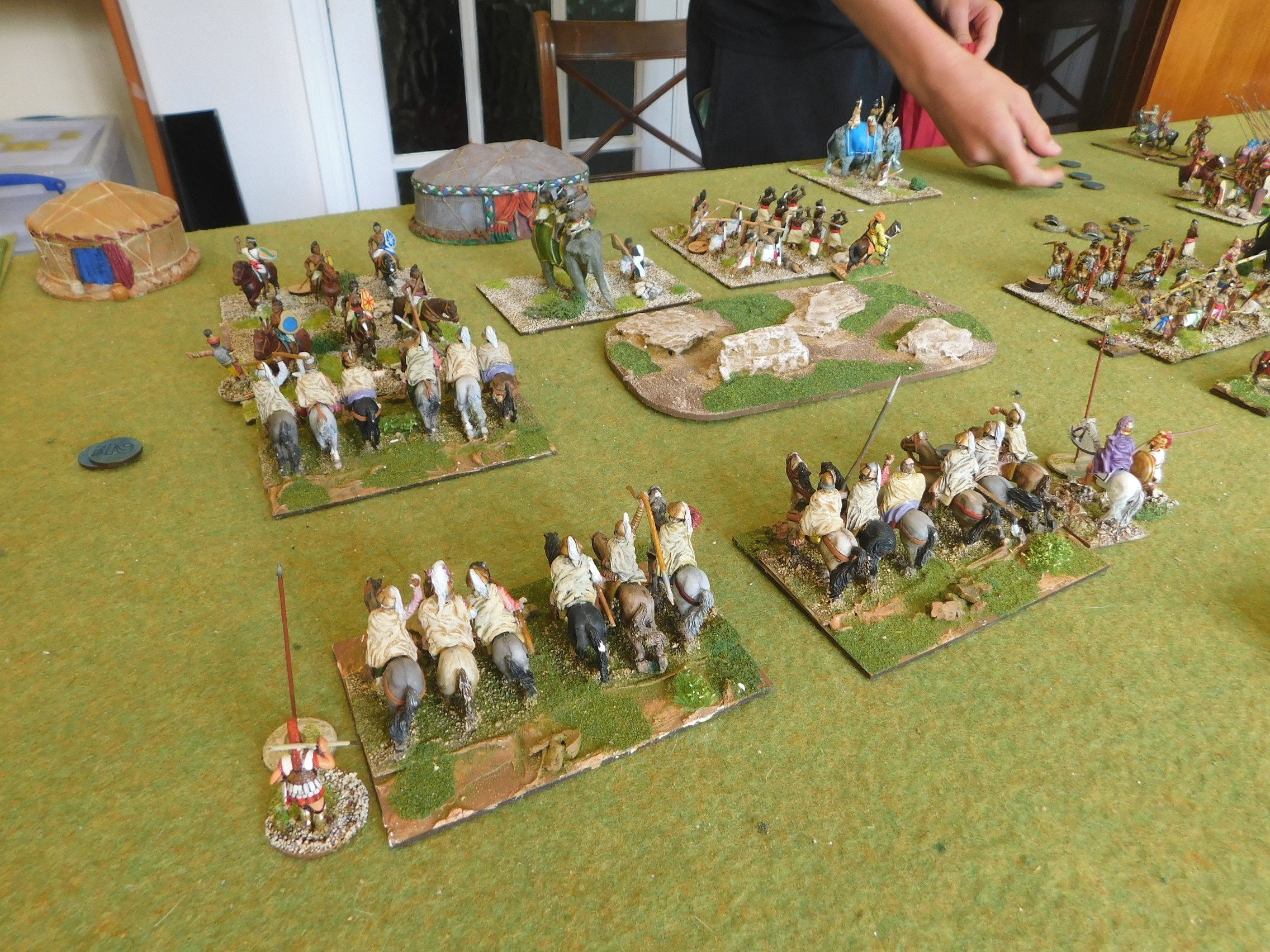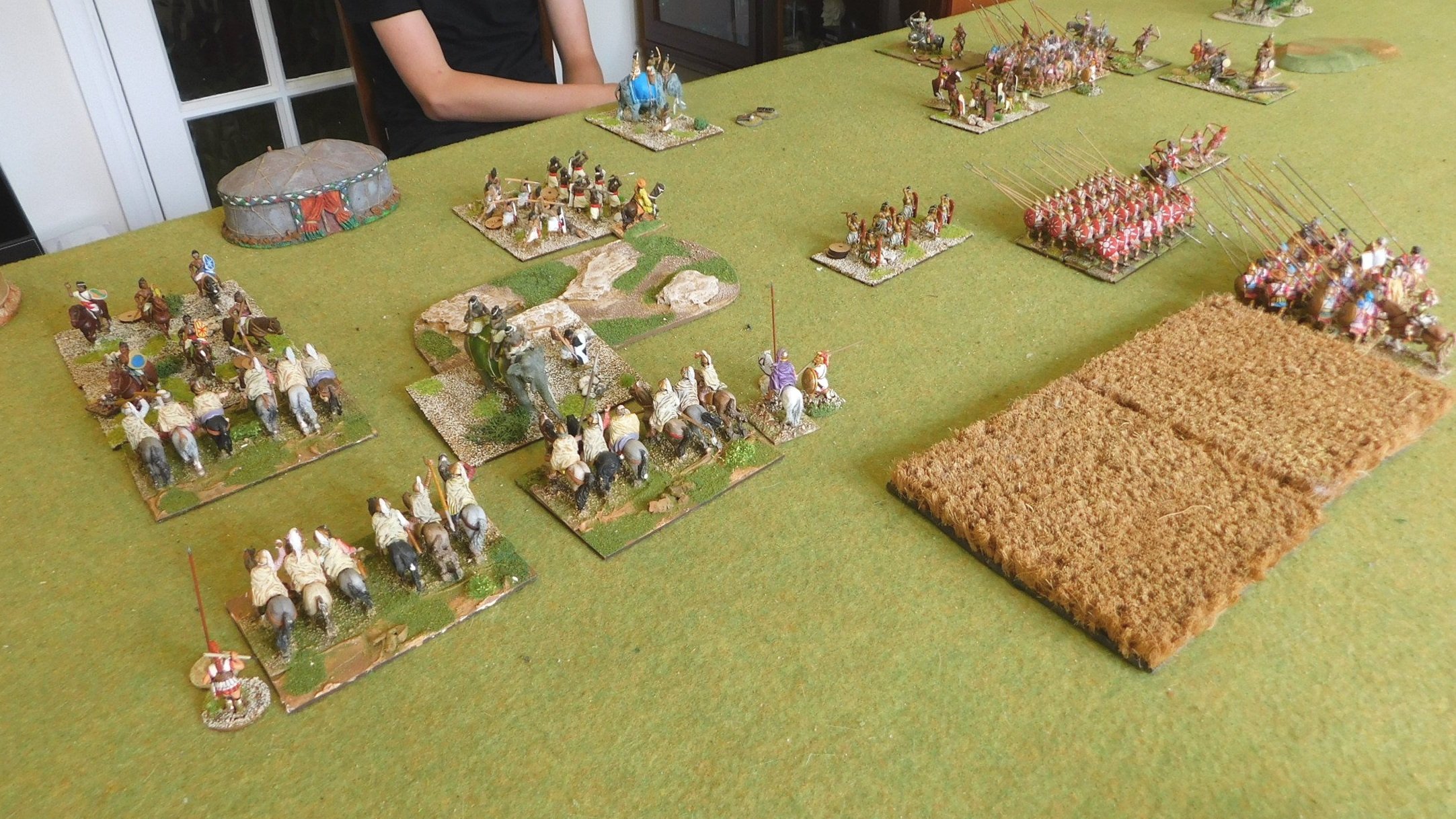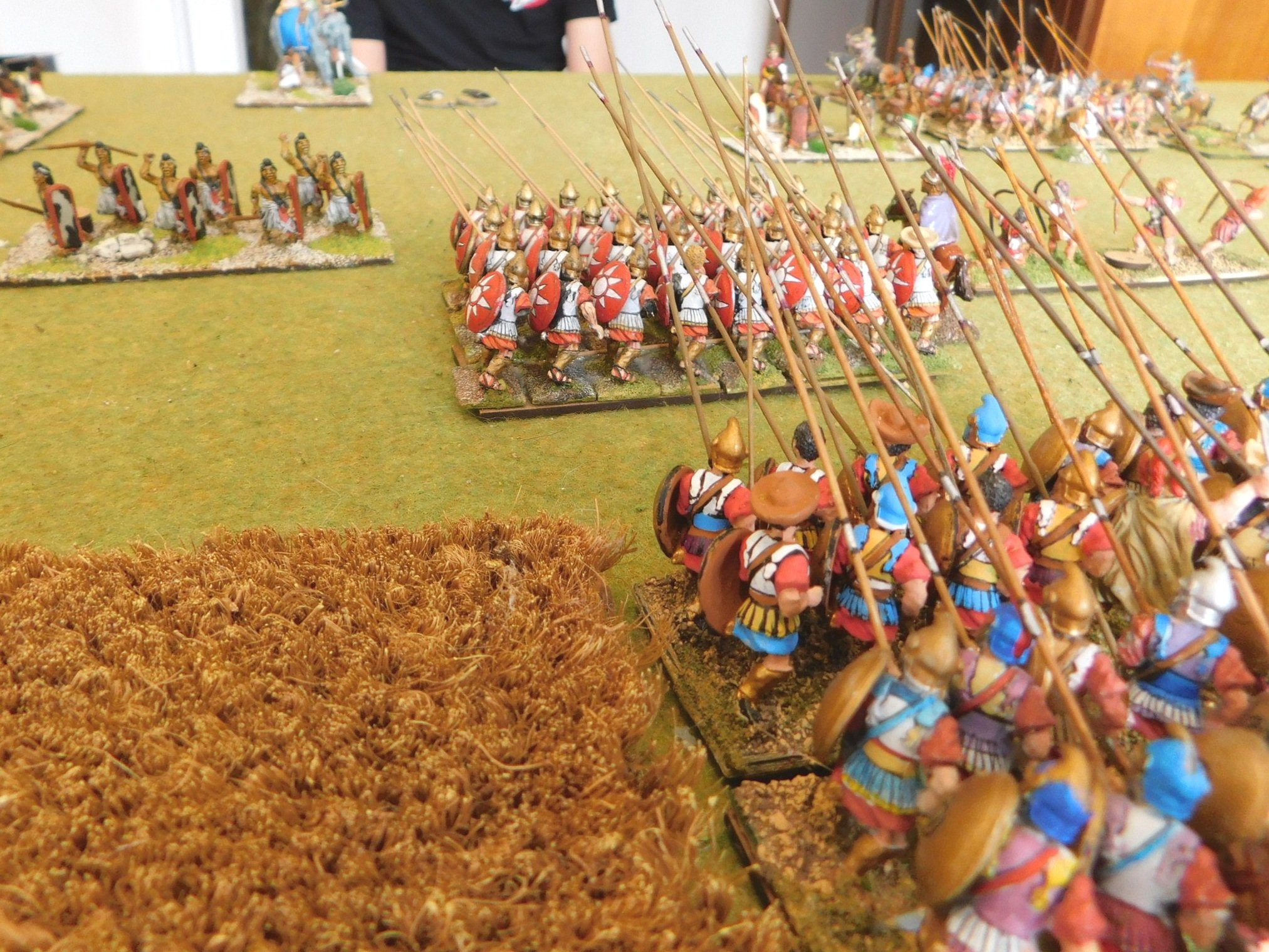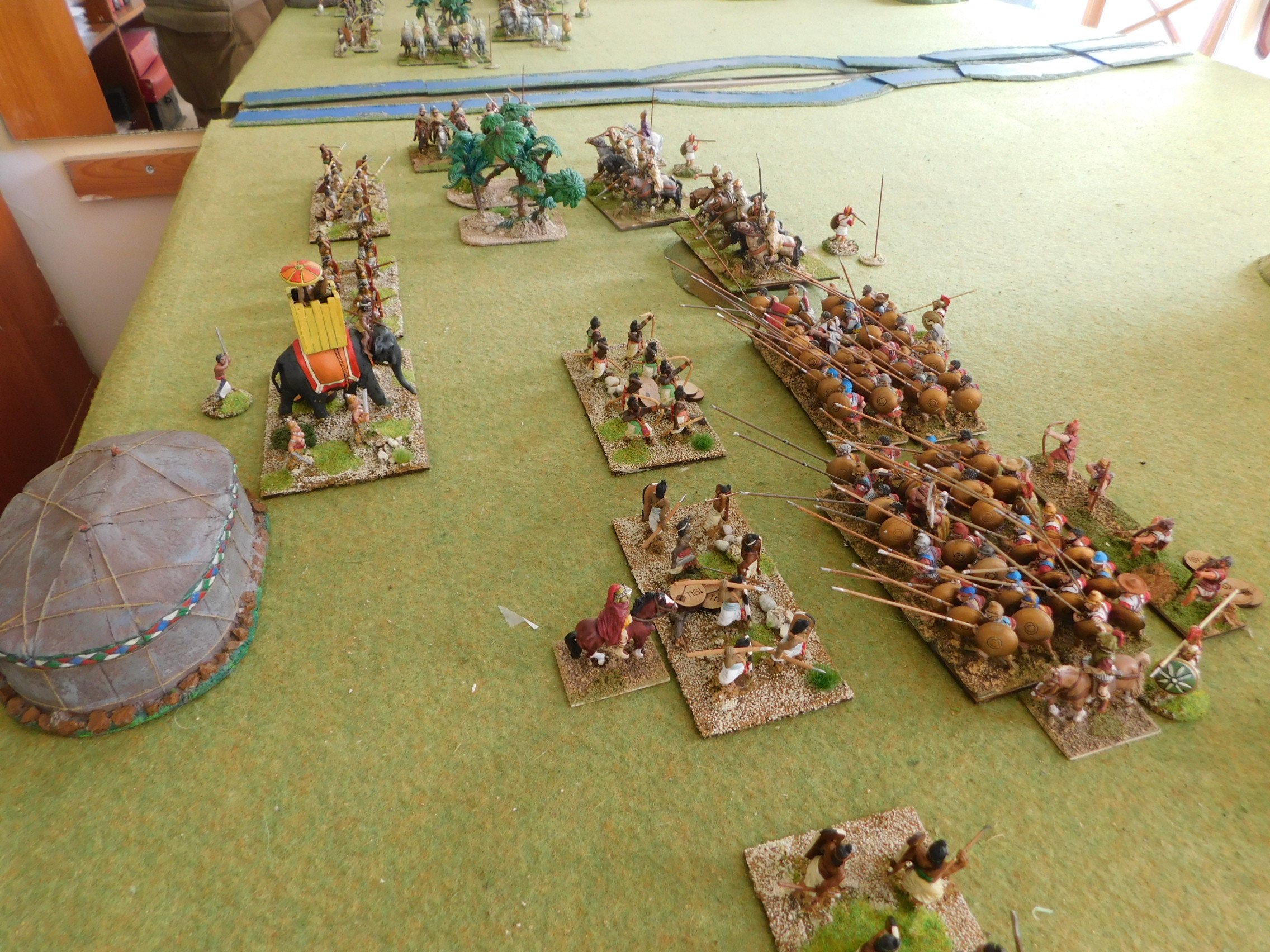A couple of weeks ago it was over to Benson to play in a huge re-fight of the Napoleonic battle of Heilsberg.
From Wikipedia:
On 24 May 1807, the Siege of Danzig ended when Prussian General Friedrich Adolf, Count von Kalckreuth capitulated to French Marshal François Joseph Lefebvre. This gave Napoleon the opportunity to engage the Russian forces led by Levin August von Bennigsen. On 2 June, before Napoleon could act, Bennigsen ordered his columns to converge on Marshal Michel Ney's exposed VI Corps. Outnumbered by 63,000 to 17,000, Ney fought a rear guard action at the Battle of Guttstadt-Deppen on 5 and 6 June. Though he lost his baggage train, two guns, and 2,042 men, Ney managed to escape to the southwest over the Pasłęka (Passarge) River with the bulk of his soldiers.
Within two days, Napoleon had ordered his 190,000-man army to close in on the 100,000 Russians and 15,000 Prussians. Aware of their approach, Bennigsen ordered his troops to fall back on Lidzbark Warmiński ("Heilsberg" in German). The Russian army took up strong defensive positions around the town, which stood on the Łyna (Alle) River. The French army, under Marshals Murat and Lannes, attacked on 10 June. Bennigsen repelled several attacks, resulting in huge French casualties, but had to withdraw towards Friedland the following day. Four days later, the decisive Battle of Friedland occurred, ending the War of the Fourth Coalition with the passing of the Treaty of Tilsit.
And about the battle itself:
The French cavalry under Joachim Murat was selected to lead the frontal attack, but Napoleon did not arrive on the field in person until Murat had already led a disastrous charge. Marshal Mortier and Marshal Davout advanced on the Königsberg side. Soult and Lannes, leading separate cavalry units, and Ney, with the infantry, moved forwards on both sides of the River Łyna. These smaller units proved ineffective, especially when Prussian reinforcements arrived, sent by Anton Wilhelm von L'Estocq at Bennigsen's request. Lannes made an unsuccessful attack which cost the French 3,000 casualties. On the Russian side, Bennigsen was suffering from fever and had difficulty remaining in command.
On 11 June, the substantial casualties on both sides and the success of the Russian defence gave Bennigsen and Napoleon little choice but to call an undocumented truce to end hostilities. The French had lost an estimated 12,000 men. The truce was focused primarily on the recovery of wounded soldiers. The battle ended with medics and soldiers from both sides helping the wounded and retrieving the dead. When Napoleon entered the deserted Russian positions the following day, he found that all except the wounded had been evacuated overnight.
I would play Murat, commander of the French cavalry, with Anon and Mark leading the French infantry. The Russians would be played by Edward and John. We also had two referees (and the architects behind the game): Bevan on the French side and Dave on the Russian side. The rules used were Age of Eagles.















